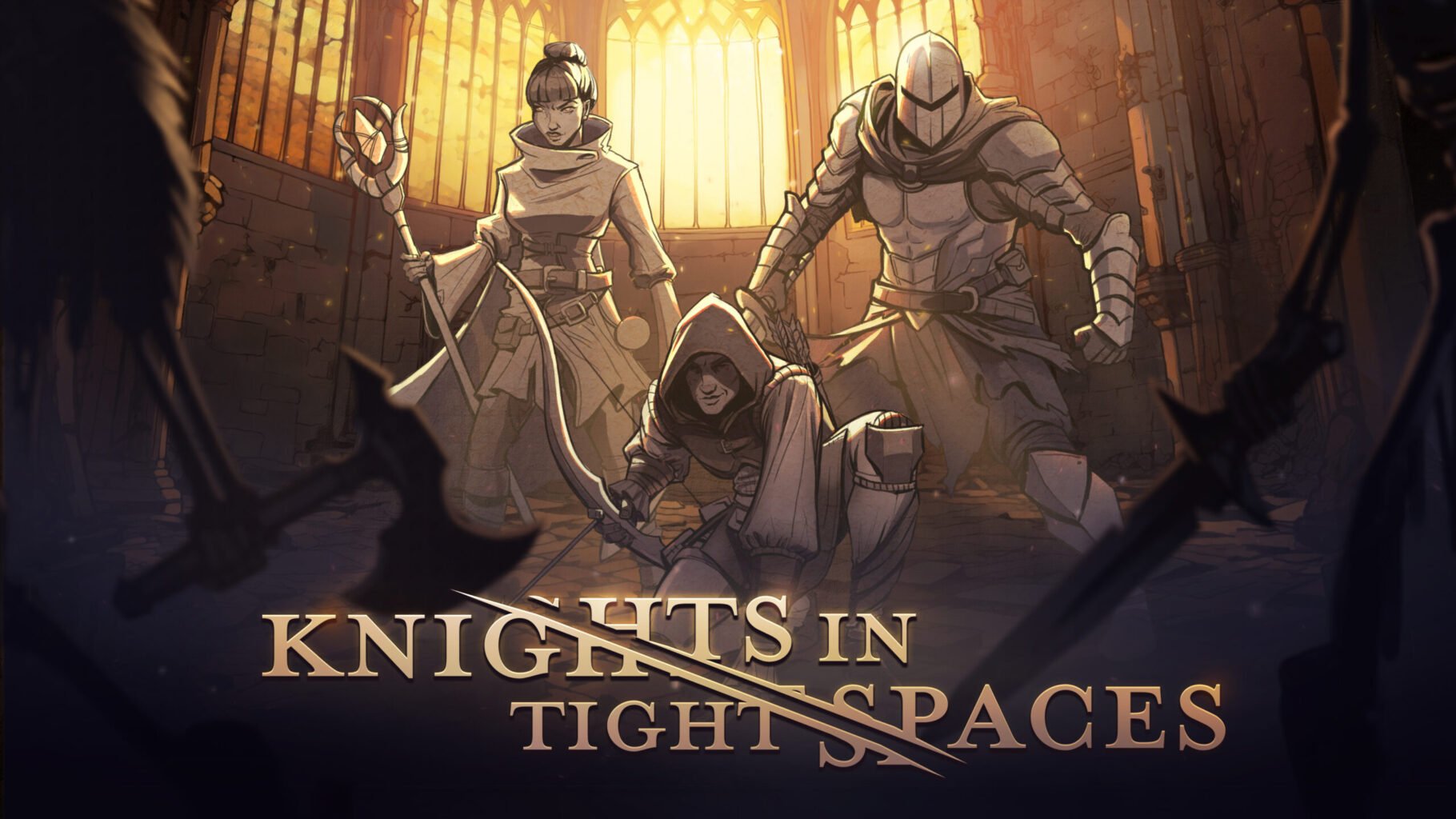Here we have a game that I know many people have been waiting for…at least, I know I have. This is the next game by the fantastic team that made Fights in Tight Spaces. Knights in Tight Spaces is a tactical roguelike deckbuilder. It takes the formula from the previous game and tries to build upon it quite a bit. Let’s jump in and see if the medieval twist was the right direction or if this one should be left in the past.
In this article, I will be going over the following topics:
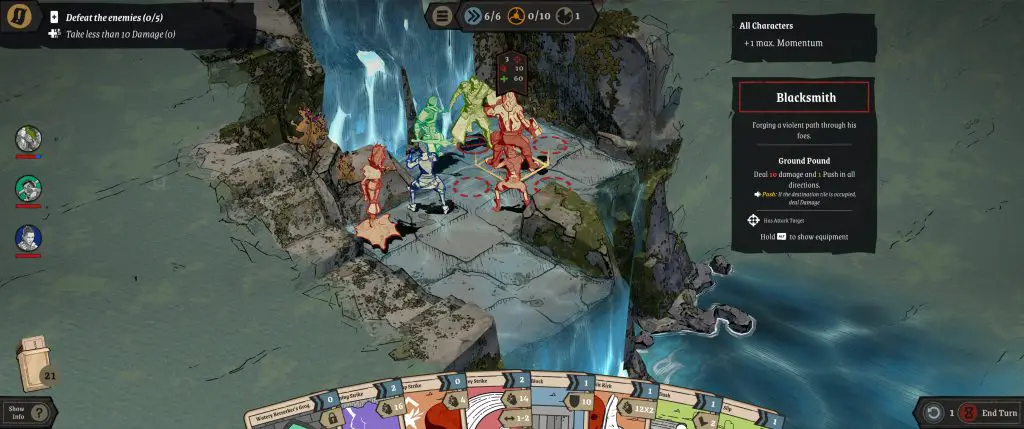
Story
You are an adventurer who gets looped into fighting the evil forces at work before they get out of hand. Recruited by someone from the good side, you gather your party and build up your deck to stop all manner of outlaws and supernatural forces the best way you know how by fighting them in tight spaces.
Gameplay
This time you are not alone. The main focus of Knights in Tight Spaces is to build up a team of fighters to take on the enemy. Each character that joins your party will come with a set of cards. You will also be able to equip them with gear to prepare for the fights ahead. We’ll talk about the different elements of gameplay and, of course, combat.
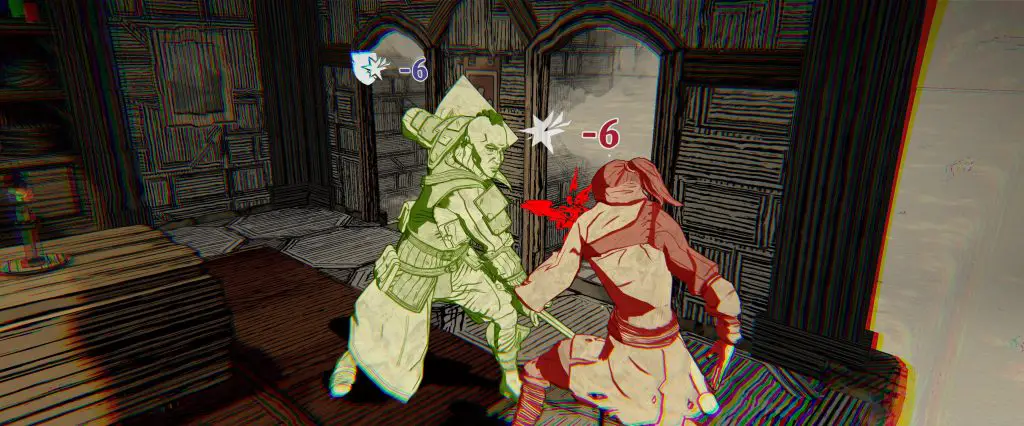
Modes
There are three different game modes that you can play in Knights in Tight Spaces. The first is the Story mode, in which you will follow a narrative and slowly progress through the story. Then there is the Daily mode that has a variety of presets that everyone has to use for that day, such as what cards are in your deck and any special modifiers. Then, you play as far as you can get and your score is put on the leadership board for the day. Lastly, there is the Endless mode. You will pick your difficulty and character and see how many fights you can get through before you lose a fight.
Classes
When you start a new run, one of the first things you will do, other than in Daily mode, is select your character class. There are eight different archetypes with four unlocked at the start of the game. The starting four archetypes are Brawler, Fighter, Rogue, and Sorcerer. The other classes will be unlocked as you progress through the game.
Each archetype has a different set of starting cards in its deck and has a different playing style. There are also some restrictions on what cards can be played by which class. For example, the Fighter focuses on melee combat and can use cards that specify single-handed weapons, but cannot use magic ability cards.
On the other hand, the Sorcerer is focused on using magic attacks. They have a negative modification to all melee weapons and unarmed attacks, but they can use magic ability cards that the fighter cannot. Having a mix of classes in your party can make a big difference when trying to have a successful run.
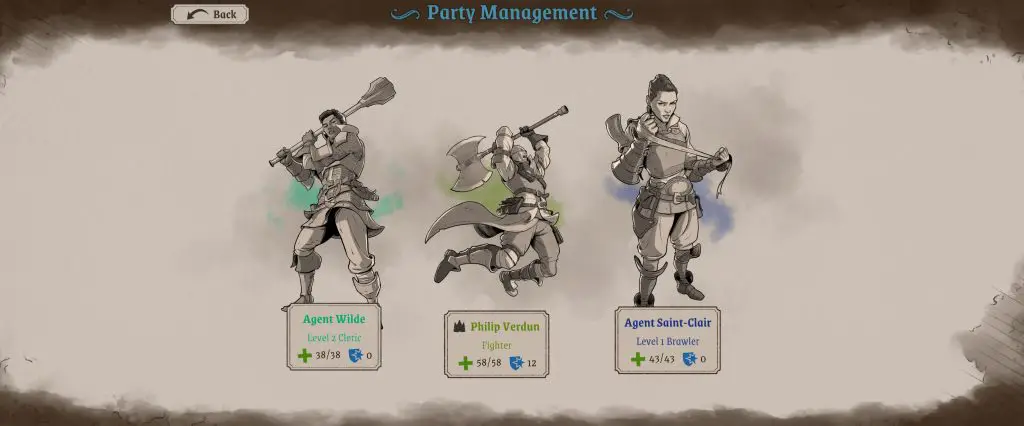
Map
Similar to many other games in the genre, Knights in Tight Spaces uses a singular direction spiderweb style map. However, there are also options for side quests that can branch out in their own directions. There are a handful of nodes that you will come across while on your adventures.
The primary nodes that you will be going to are combat nodes. There will be a preview of the encounter to show you what enemies you will face and what type of rewards to expect (more on rewards in the Combat section). The other nodes you will see are Blacksmith, Taverns, and Traders.
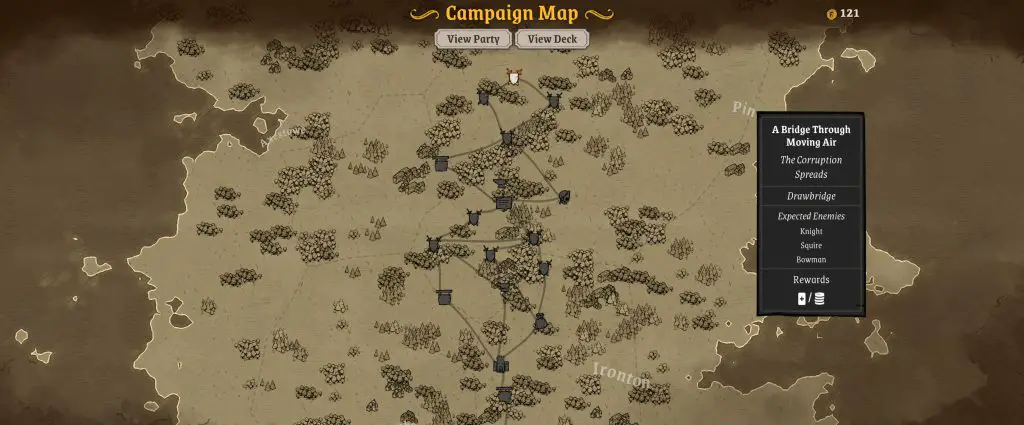
At the Blacksmith location, you will be able to purchase new equipment or upgrade your current gear. This includes things like armor, weapons, and potions. While visiting a Tavern, you will get to heal your party, recruit new party members, or even dismiss existing ones. Lastly, at the Trader’s location, you will be able to purchase new cards or upgrade your favorite ones. You can also remove cards as needed.
Gear
Gear is something new to Knights in Tight Spaces that was not in the previous game. Each character has equipment slots for different things that they are able to use. Some, like the Brawler, only believe in unarmed combat, which means they are only able to carry potions and other consumables. Fighters, on the other hand, believe in carrying as much as they can carry. As a result, they are able to be equipped with armor, melee weapons, shields, and even consumables.
All the gear in the game has a rarity classification. There is also a wide range of effects on the equipment. This ranges from things like +4 attack to poison damage on hit or increased block per turn for armor. You can pick up gear from the Blacksmith location or as a reward after a combat encounter.
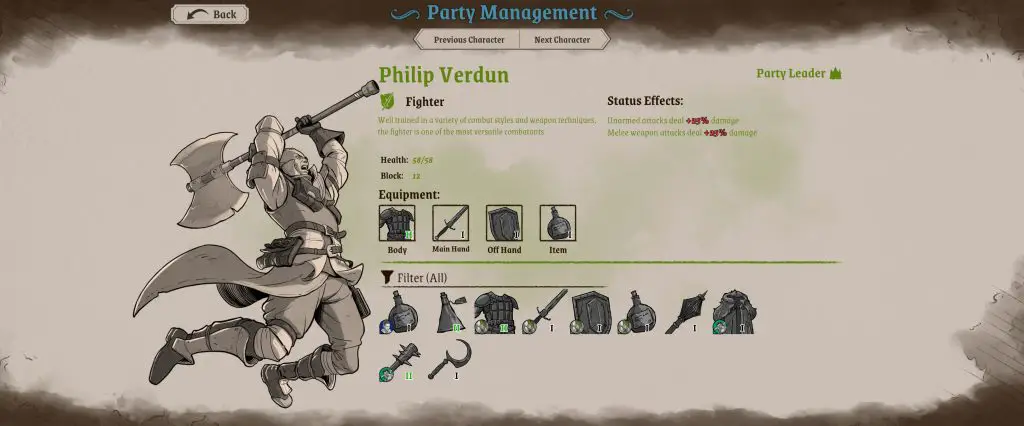
Cards
As previously mentioned in the Classes section of this article. In Knights in Tight Spaces, there are different combat cards for different archetypes. Combat cards can fall into four different classifications. Those classifications are Unarmed Melee, Ranged, Magic, and Armed Melee. Characters without a melee weapon cannot use armed melee cards, and only someone with a bow can use ranged attack cards, for example.
There is also a large list of defensive and movement cards. You are not going to be able to knock out every opponent in a single turn, so defensive abilities can be just as vital to your success as the combat ones. There is not always a lot of space to move around, so sometimes you have to hold your position and armor up. That or you have to get creative with your movement.
Knights in Tight Spaces has a lot of creative movement cards to keep your characters out of harm’s way. There are basic moves like Dash, where you can simply move two spaces, but there are also moves like Slip and Flip that you can use more creatively. Slip allows your character to move to either side of an adjacent unit while Flip allows your character to vault over an adjacent obstacle, enemy, or tile into an available space. Cards like these help make for very interesting tactical and dynamic combat encounters.
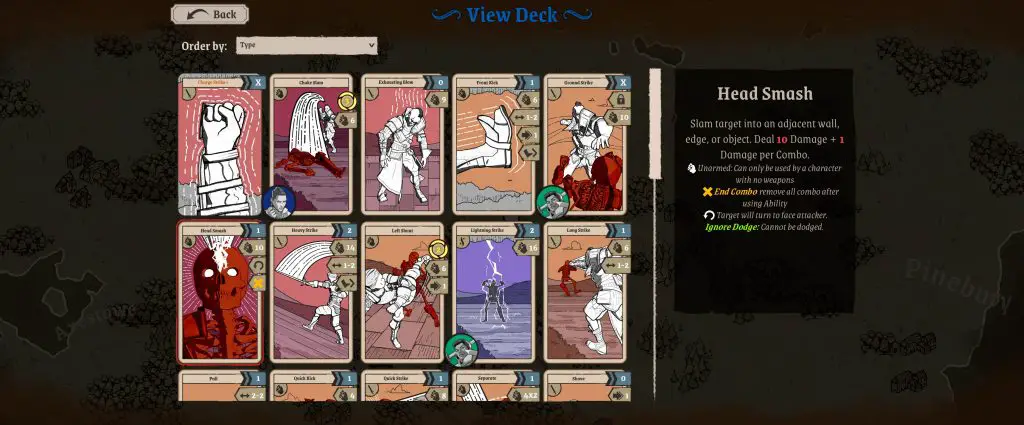
Combat
Let’s finally dig into the combat system of Knights in Tight Spaces. On your turn, you are going to play cards to do actions. The cards in your hand that round are shared amongst all of your characters in combat. You have the typical momentum points that allow you to play a certain number of cards per turn, but it is a shared pool between all party members. Meaning one character can use all of the momentum if you want to.
When you run out of momentum, you end your turn, and the enemy gets a turn. However, unlike a lot of other deckbuilders, Knights in Tight Spaces is played on a grid and, like the title suggests, all the combat encounters are going to be in very close quarters locations. This is where those unique movement cards come into play that I was just talking about.
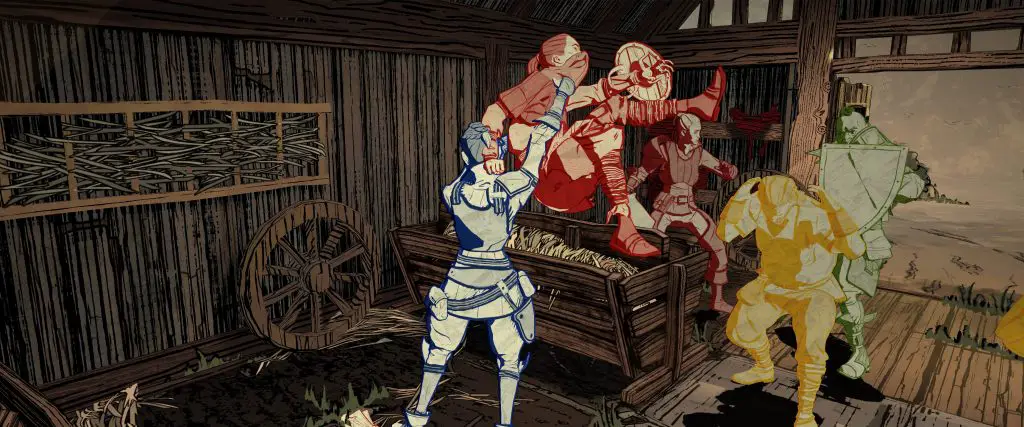
Figuring out how to efficiently play both movement cards and damage cards will lead to a successful combat encounter. Another thing that usually leads to a successful encounter is your combo meter. Your combo meter will go up by every hit you make on an opponent. Certain cards require a set amount on your combo meter before the card can be used. You can also lose combo points by either moving or using cards that deplete your combo meter after being played. This adds even more depth to the tactical combat.
Teammate combos are something new to the In Tight Spaces franchise. Since you now have a party of characters in every fight, you might as well use them to their fullest. When one of your characters hits an enemy that is adjacent to another one of your characters, then the one that didn’t attack gets a free hit on that enemy unit. You can always double down and have all three of your characters next to an enemy to get two free hits each time someone makes an attack. The adjacency is also a little bit flexible too. What I mean is, someone with a bow can get a free shot on an enemy unit from across the room when their ally hits the enemy. You can also shove an enemy into a space next to an ally for a free teammate combo hit as well. There are lots of options to get creative with.
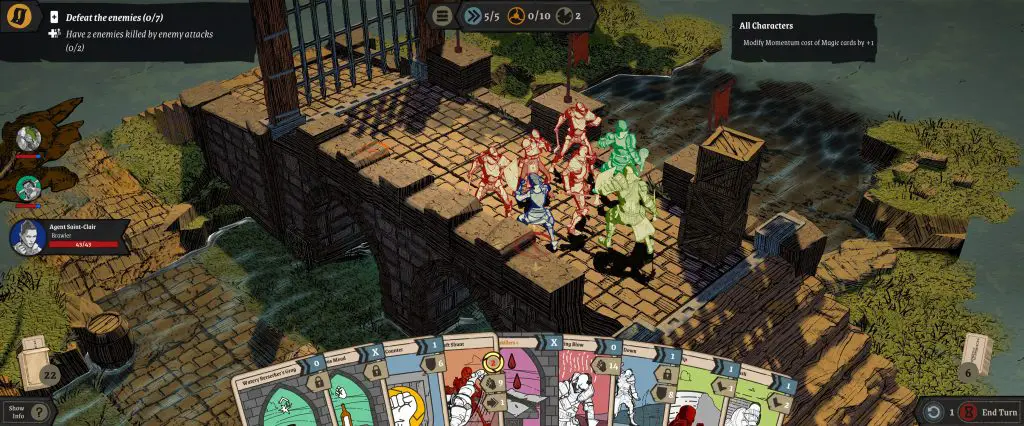
Defeating the enemy isn’t always the only focus in combat, though. Sometimes you need to just survive for a set number of rounds. There are also secondary objectives for you to complete during every fight. You will receive special rewards for completing them, such as money, items, or even a party health increase. Going after the secondary objectives is not always easy, but it is always worth the effort. Some secondary objectives include protecting hostages and pushing enemies off bridges or out windows a set number of times. They might sound easy, but positioning can be tough.
Conclusion
Alright, is Knights in Tight Spaces worth picking up? Did it build off of what made the first game a success, or was it a miss that should be left in the past? For me, Knights in Tight Spaces was everything I was hoping for and more.
The combat was even better than the first game. The new addition of party members and gear really put it over the top. The new art style felt like a nod to the other game, but fresh and fitting for the medieval theme. The game can be quite challenging, especially at the higher difficulty levels, but that just makes it so much better when you win a tough fight.
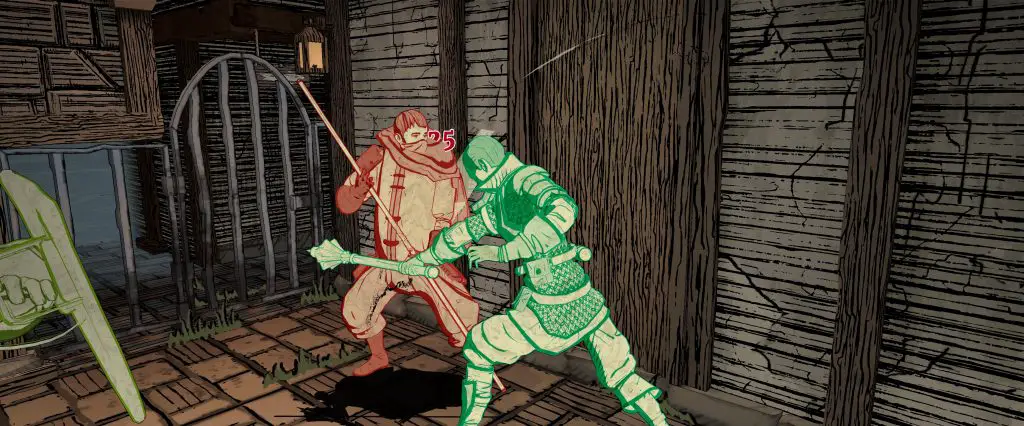
For anyone who played Fights in Tight Spaces, this one is going to be a must-play. I also think this game is fantastic on the Steam Deck. I spent most of my play sessions playing the game on my Steam Deck and really enjoyed it.
The controls integrated nicely and the game ran without any problems on the default setting. If you are looking for a new turn-based game, a new deckbuilder, or just something with some tactical depth, then don’t be afraid to check this one out on their Steam page.
A review key was provided by the developers at Ground Shatter.

